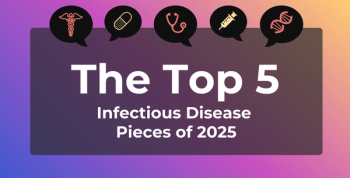
Real-World Treatment Patterns Highlight Need for Clinical Education on PD-L1 Testing in NSCLC
Data presented by the FDA at the 2017 American Society of Clinical Oncology Annual Meeting identified a need for educating community-based oncology practices on testing for programmed death-ligand 1 (PD-L1) protein expression before patients diagnosed with metastatic non-small cell lung cancer (mNSCLC) are treated with nivolumab or pembrolizumab.
Data presented by the FDA at the 2017 American Society of Clinical Oncology Annual Meeting identified a need for educating community-based oncology practices on testing for programmed death-ligand 1 (PD-L1) protein expression before patients diagnosed with metastatic non-small cell lung cancer (mNSCLC) are treated with nivolumab or pembrolizumab.
The FDA first approved the programmed death-1 (PD-1) inhibitor nivolumab (Opdivo) for use in patients with squamous NSCLC who had progressed on platinum-based chemotherapy in March 2015, and in patients with non-squamous NSCLC in
However, following these approvals, treatment patterns of nivolumab and pembrolizumab, as well as PD-L1 testing patterns, remained unclear. The FDA, therefore, conducted a retrospective analysis using de-identified patient-level electronic health record (EHR) data aggregated from community practices by Flatiron Health. Data were abstracted using both structured and unstructured EHR content with 10% duplicate abstraction to confirm data quality.
Patients with clinically-confirmed mNSCLC, diagnosed between January 2011 and March 2016, who had a documented order of, or had been administered, either nivolumab or pembrolizumab, were included in the analyses. PD-L1 expression testing results were abstracted from unstructured data in EHRs.
The analysis found that within the first year of FDA approval, 1351 patients with mNSCLC received nivolumab (96.7%), pembrolizumab (3.6%), or both drugs in different lines (0.3%). The median duration of treatment was 113 days (95% CI, 99 to 128 days).
Overall, 11.3% of patients were tested for PD-L1 expression, 42.2% of whom tested positive. PD-L1 expression testing increased quarterly (Q) from 3.0% in Q2 2015 to 12.8% in Q1 2016. An FDA-approved companion diagnostic was used 30.5% of the time. Among patients who received nivolumab, 93.5% were not tested for PD-L1 expression, 2.5% tested positive, and 2.8% tested negative for PD-L1. Among patients who received P, 37.5% were not tested for PD-L1 expression, 52.0% tested positive, and none tested negative.
Based on their results, the authors conclude point out the low rates of PD-L1 expression testing in community oncology practices for patients with mNSCLC receiving nivolumab or pembrolizumab. Testing rates increased quarterly following the approval of pembrolizumab, which was approved in tandem with a companion diagnostic. A majority of patients, the study found, were not tested using the FDA-approved companion diagnostic. Most patients who were not tested for PD-L1 expression or tested negative received nivolumab.
The study authors concluded that the real-world treatment patterns evaluated here underscore the importance of clinician education as data on optimal PD-L1 testing strategies guiding immunotherapy treatment decisions accumulates. Ongoing studies are collecting information that would help establish the impact of PD-L1 testing strategy on patient outcomes.
Newsletter
Stay ahead of policy, cost, and value—subscribe to AJMC for expert insights at the intersection of clinical care and health economics.







































